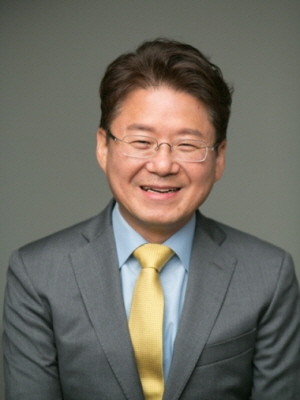ESG 실천을 위한 공회전제한장치 부착과 관련해 정부 및 지자체의 보조금 등이 필요하다는 김필수 대림대 교수의 이야기를 들어봤다.
서울 택시 5만대 장착시 年 795억절감·CO2 19만4천톤 감소
정부·지자체 관심 중요, 보조금 지급 기준 만들어 활성화해야

지난 2008년 국내에 처음으로 필자가 도입한 ‘친환경 경제운전(에코드라이브, Eco-drive)’은 대중의 큰 관심을 끌었다.
에코드라이브는 운전자가 친환경 경제운전을 통하여 연료를 절약하고 동시에 이산화탄소를 저감시키며, 한 템포 느린 운전으로 교통사고도 줄이는 1석 3조의 효과가 있었기 때문이다.
당시 글로벌 시장에 에코드라이브가 몰아치면서 국내에서도 환경부와 국토교통부가 나서서 적극적으로 도입하기에 이르렀다.
당시 환경부는 ‘친환경 운전’으로 국토교통부는 ‘경제운전’으로 표기하면서 경쟁적으로 활성화에 노력하였다고 하겠다.
당시 필자는 관련 각종 정책연구와 인센티브 정책은 물론 토론회, 저술활동, 정부와 지자체의 에코드라이브 이행 시 주는 각종 인센티브 정책 등을 주관하면서 활성화에 노력하였다고 하겠다.
그 이후 짧은 시간에 효과를 바랬던 정부는 식상해지면서 수년 후 관심의 대상에서 벗어나면서 일반인들의 관심도 크게 벗어나게 되었다고 하겠다.
영국 등 유럽과 일본 등에서 크게 부각되어 상당한 효과를 보았던 반면 우리나라는 빨리 식는 문화로 인하여 에코드라이브 관심조차도 사라지게 되었다고 하겠다.
특히 우리나라는 약 97%의 에너지를 해외에서 수입하고 ‘빨리 빨리’ 문화로 인한 에너지 낭비와 교통사고 및 사망자 급증, 에너지 소모 등 여러 면에서 선진국 대비 가장 최악의 구조를 지니고 있어서 더욱 에코드라이브가 중요하다고 하겠다.
그러나 현재 에코드라이브에 신경을 쓰고 있는 국내 정부나 지자체는 없는 상황이다. 즉 에코드라이브의 효과를 제대로 보지 못하고 있다는 뜻이다.
최근 전기차가 부각되고 있으나 전기차의 가성비가 여러 면에서 떨어지면서 전기차 캐즘도 발생하고 있다.
내연기관차를 선호하는 트럼프 리스크도 부각되면서 전기차보다는 기존 내연기관차와 친환경을 조금이나마 가미한 하이브리드차가 현실적으로 부각되고 있다.
우리나라도 차량 등록대수 약 2,600만대 중 아직도 내연기관차가 2,000만대가 넘는 실정이고 전기차 캐즘과 트럼프 리스크로 인하여 더욱 내연기관차와 하이브리드차가 인기를 끌고 있는 상황이다.
최근 지구온난화 가스인 이산화탄소 배출에 대한 기준도 유럽부터 수년 정도 늦추어지면서 아직은 내연기관차 기반의 보급이 더욱 위력을 발휘한다고 하겠다.
다시 에코드라이브가 더욱 중요해지고 있는 것이다.
특히 이산화탄소 저감에 대한 국제적 의무화와 각 기업의 ESG가 필수적으로 떠오르는 요즘은 더욱 효율적인 실천방법이 중요한 시기라고 하겠다.
내연기관차의 에코드라이브는 운전자가 노력하여 각종 친환경 경제운전을 하는 만큼 운전자의 의미가 중요하지만 장착 장치를 통하여 자연스럽게 에코드라이브를 할 수 있다면 가장 큰 효과를 볼 수 있다고 하겠다.
이 중 가장 부각되는 방법이 바로 공회전 제한장치(ISG ; Idle Stop & Go system)라고 하겠다.
즉 신호등 앞에서 차량이 정지하면 자동적으로 엔진이 정지되어 연료 절약과 이산화탄소 저감을 이루는 중요한 방법이고 출발 시 브레이크 페달에서 발을 떼면 다시 시동이 자연스럽게 걸리는 구조이다.
이 장치는 이미 유럽에서 모든 자동차 제작사가 약속하여 신차에 장착하는 만큼 의무적으로 장착되어 있으며, 운전자가 이 장치를 정지하고 싶으면 출발 시 스위치를 꺼놓으면 동작되지 않는다고 하겠다.
그러나 국내의 경우는 에코드라이브 초기에 장착되는 차량이 여러 가지 있었으나 현재는 거의 없는 상황이다.
예전에 시범적으로 버스 등에 애프터마켓용으로 공회전 제한장치를 장착하여 연료절약과 이산화탄소 저감을 이루고 효과가 큰 운전자에게 각종 인센티브를 주기도 하였으나 현재 이 장치를 장착한 버스회사는 전무한 상황이다.
관심도와 지자체의 의지 등도 중요하지만 이 장치를 통하여 계속 시동과 정비를 하면서 배터리와 시동모터 수명에 영향을 주었기 때문이다.
이러한 부정적인 요소가 크게 부각되면서 당시에 정부와 자차체, 회사 등 모두가 외면하였다고 하겠다.
그러나 현 시점에서 전기차 등 무공해차의 보급도 늦어지고 있고 당장 연료절약과 이산화탄소 저감 등을 실현하고자 하고 있으나 마땅한 방법이 없었다고 하겠다.
이 상황에서 다시 공회전 제한장치가 부각되고 있다.
10여년 전 당시 앞서 언급한 각종 부작용도 배터리 용량 강화와 시동모터 강성구조로 인하여 현재 이에 대한 수명 단축 등 부작용은 없는 상황이다. 물론 장치의 첨단화도 한몫하고 있다. 다시 이 장치의 효과가 크게 부각되고 있다.
올해 초 부터 서울시와 공회전제한장치 보급 기업이 MOU를 하고 시범사업 중이다.
해당 기업은 지난 거의 20년간을 해당 장치와 업그레이드에 노력하여 간단한 탈부착과 저렴한 비용은 물론 실시간적으로 무선을 통하여 사무실 등에서 절약되는 연료량과 이산화탄소 저감량을 실시간적으로 보면서 검증을 확인하는 유일한 기업으로 부각되고 있다.
특히 배터리 등의 수명감축 등 단점을 보완한 장치로 더욱 인기를 끌고 있다.
MOU를 통하여 서울시 법인택시 약 5대를 우선 장착하여 최근 약 2개월의 시험결과 공회전 시간은 전체 운영시간의 약 30%에 이를 정도로 낭비성이 크다는 것이었고 공회전 제한장치 장착을 통하여 약 20% 시행하는 것이 확인되었으며, 이에 따른 결과는 생각 이상으로 매우 크다는 것이 검증되었다.
약 1개월 진행 시의 효과는 법인택시 1대당 하루 평균 약 1리터의 절감과 이산화탄소 2.6Kg이 덜 배출되는 것으로 판명되었다.
특히 개인택시와 달리 법인택시는 공회전 제한장치에 대한 선호도가 낮은 상황에서 이와 같은 뚜렷한 효과가 입증된 것은 더욱 의미가 크다고 하겠다.
만약 서울시 택시 1대를 공회전 제한장치 약 70%를 이행하면 일년 간의 연료절약은 1,447리터가 되어 연료값 159만원이 절약되며, 이산화탄소 저감은 약 3.9톤으로 대단하며, 유럽과 같이 곧 이산화탄소 거래로 인한 비용 부가까지 추가한다면 그 가치는 더욱 엄청나다고 할 수 있다.
서울시 택시 5만대에 모두 장착되어 시행하면 연료 절감은 약 795억원, 이산화탄소는 19만4,000톤이 감소하는 것이다.
어떤 장치와 비용을 투입해도 이와 같은 효과를 낼 수 있는 방법은 전무하다고 하겠다. 그래서 더욱 이 장치가 중요하다고 하겠다.
최근 해당기업으로 각 지자체와 물류를 크게 가진 기업이 협력을 요청하면서 즐거운 비명을 지르고 있는 상황이다.
이미 서울시를 비롯한 지차체와 각 기업이 이에 대한 관심이 어느 때보다 커지는 형국이다.
최근 국제 사회에서 기업에 대한 의무요소인 ESG가 부각되면서 더욱 내연기관차 중심의 물류 분야에서 공회전 제한장치가 부각되고 있다. 탄소 거래가 더욱 활성화되면서 ESG 실천의 최고 방법으로 부각되고 있는 것이다.
앞으로 정부와 지자체의 보조금 지급기준을 만들고 활성화하여 본격적으로 떠오른 공회전 제한장치를 주목하기 바란다.
현재 국내 약 2,000만대의 내연기관차의 친환경 이행방법은 오직 공회전 제한장치만이 답이라 확신한다. 물론 운전자가 적극적으로 실천하는 에코드라이브도 중요한 몫을 담당할 수 있을 것이다.
 지난 2008년 국내에 처음으로 필자가 도입한 ‘친환경 경제운전(에코드라이브, Eco-drive)’은 대중의 큰 관심을 끌었다.
지난 2008년 국내에 처음으로 필자가 도입한 ‘친환경 경제운전(에코드라이브, Eco-drive)’은 대중의 큰 관심을 끌었다.